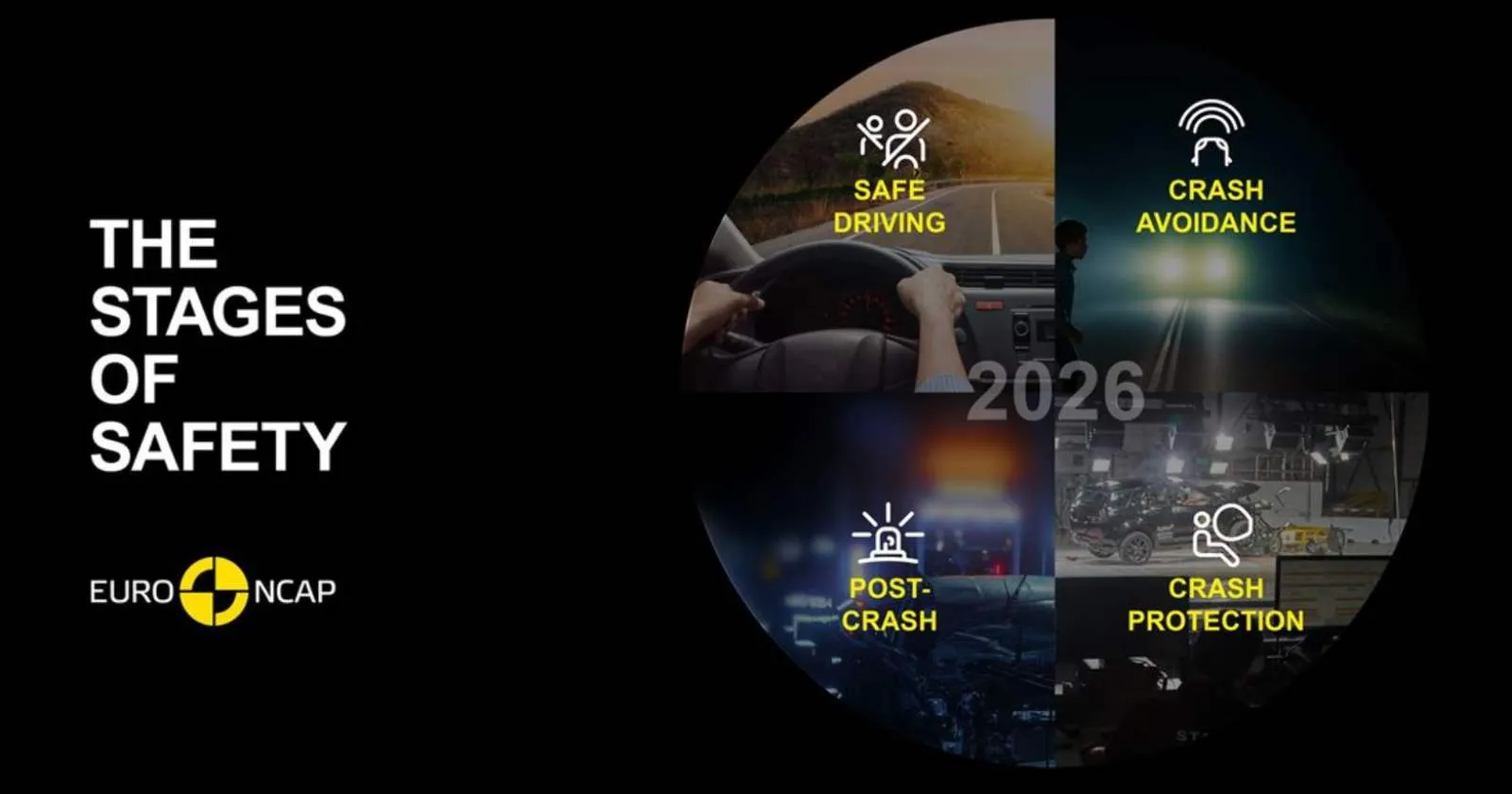
The new test protocol will include more real-world situation testing and increased adoption of technology that can help prevent accidents.
Share Post

The new test protocol will include more real-world situation testing and increased adoption of technology that can help prevent accidents.
Just days after India’s Bharat NCAP (New Car Assessment Programme) released an early draft of the next version of its testing protocol, sister organisation Euro NCAP has also released details of how it will evolve to make car safety testing more comprehensive and meaningful. The organisation is undertaking its biggest test process overhaul since its inception in 2009. The new protocol will go into effect next year.
Much like Bharat NCAP’s five weighted rating parameters, Euro NCAP will migrate to four categories: safe driving, crash avoidance, crash protection, and post-crash safety. Cars will be able to earn 100 points in each category. The framework will also include real-world testing, outside of crash simulations, particularly to see how ADAS features work and whether visual and auditory warnings are too distracting.
Under the new protocol, cars will be evaluated for design, rewarding the use and placement of physical controls, to help keep drivers focused on the road. New cars must include driver eye and head tracking technology to qualify for a five-star rating, while impaired driver detection will be a bonus. Points will also be awarded for seatbelt systems that can detect and adapt to different occupant body types.
Electric cars must be designed so that high-voltage batteries are adequately isolated following a crash. Most importantly, electronic door handles must remain operable after collisions. Battery fire risk warnings must be implemented, with thermal monitoring and alerts to any potential danger following a car accident.
Accident avoidance systems including Automatic Emergency Braking (AEB) will be tested in more realistic situations including cyclists, bikes, and pedestrians. Crash tests will be supplemented by virtual simulations, and will have to include even more body types, particularly in terms of height and age.
Interestingly, Euro NCAP has also taken note of reports that ADAS alerts are actually distracting and counterproductive, prompting many drivers to disable safety features out of annoyance. Automatic emergency service contact systems will need to correctly identify the number of people inside a vehicle.
Many of these changes have been incorporated after studying driver feedback. Further details will be announced at a live testing demonstration on March 17, 2026. Euro NCAP has also committed to reevaluating its test processes every three years, recognising just how rapidly technology and design, as well as road conditions and hazards, keep evolving.
In a press statement, Dr Michiel van Ratingen, Secretary General of Euro NCAP, said “The 2026 protocols further strengthen the rigour and relevance of our tests, rewarding vehicles that perform well across all stages of safety — before, during, and after a crash. The updates to protocols ensure that Euro NCAP’s testing, analysis, and ratings remain the definitive guide for consumers who value an impartial guide to the safety of the latest cars.”
ACKO Drive Awards 2026: Kia Carens Clavis EV Takes the 2026 EV Car TOTM
Acko Drive Team 21 Dec, 2025, 8:22 AM IST
Delaware Supreme Court Restores Elon Musk's Tesla Pay Package
Acko Drive Team 21 Dec, 2025, 7:32 AM IST
BMW Motorrad India Announces Up to 6% Price Increase Across Entire Range
Acko Drive Team 21 Dec, 2025, 7:23 AM IST
S. Samuel, Former CEAT Managing Director, Passes Away at 91
Acko Drive Team 21 Dec, 2025, 7:05 AM IST
Nissan Confirms Three-Row SUV Launch for India in Early 2027
Acko Drive Team 21 Dec, 2025, 6:55 AM IST
Looking for a new car?
We promise the best car deals and earliest delivery!
